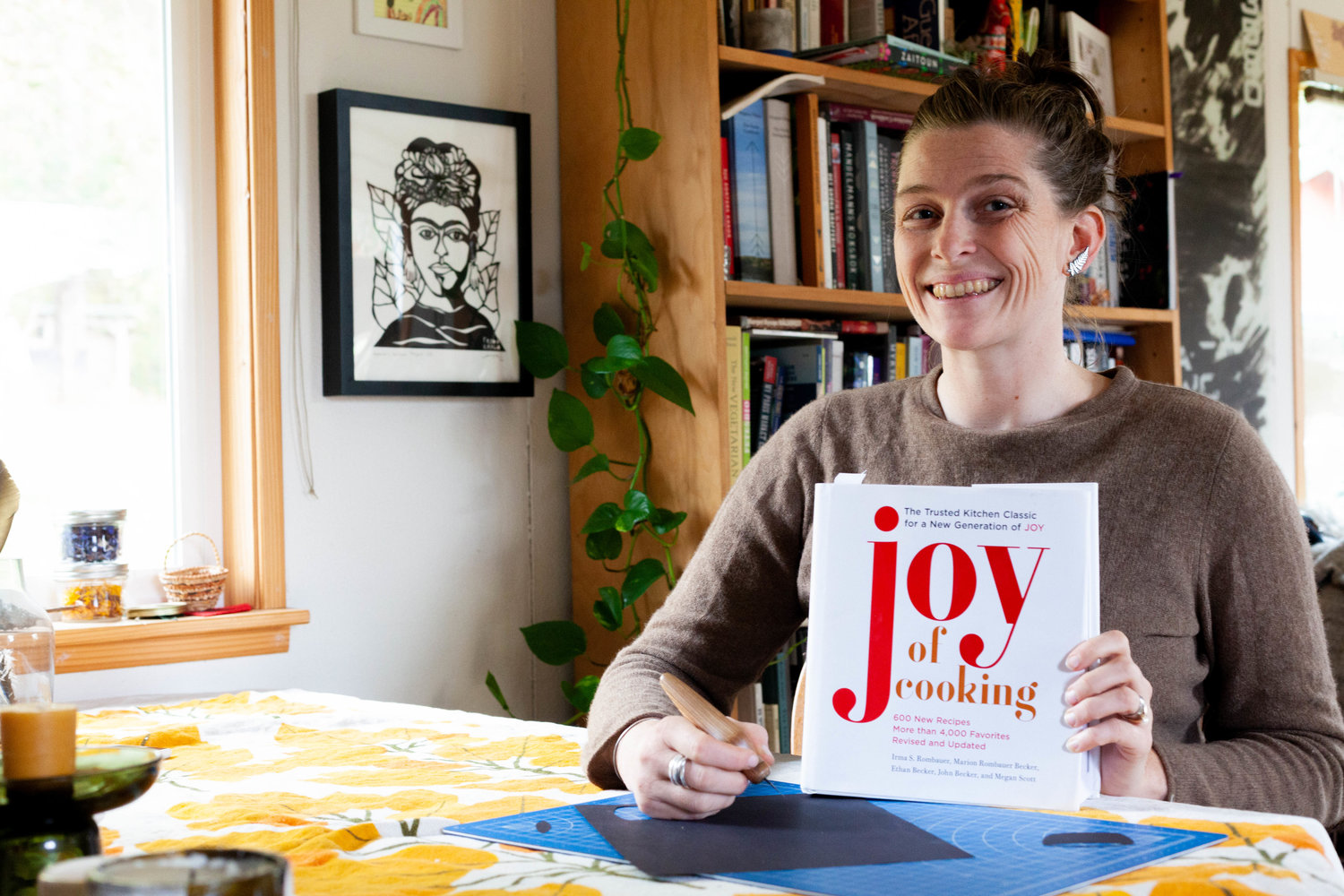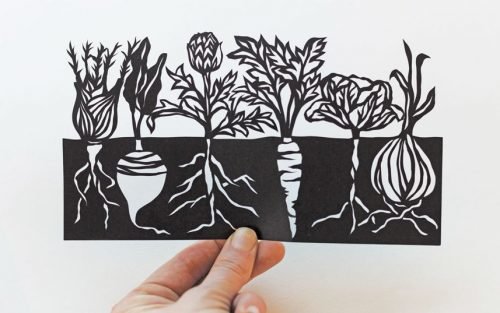
Artist, author and native Key Penner Anna Brones is one of two illustrators whose work will adorn the latest iteration of the iconic “Joy of Cooking,” now in its ninth edition.
“It’s an American cooking classic, something that is a resource that almost everybody has in their kitchen,” Brones said. “It’s often given at important life transitions; most people have told me, ‘Oh, I have my grandmother’s edition and it has all of her notes in it.’"
Properly called “The Joy of Cooking: A Compilation of Reliable Recipes with a Casual Culinary Chat,” the famous tome was first self-published by Irma S. Rombauer in 1931 when she was a newly widowed 54-year-old. Unique in its time, the book included 500 easy-to-master foundational recipes accompanied by what would become famously chatty commentaries. Rombauer died in 1962. Succeeding editions of her book have sold 18 million copies.
The ninth edition of “Joy,” published in November, was updated and expanded by Rombauer’s great-grandson John Becker and his wife Megan Scott, who share credit with Irma and her daughter Marion Rombauer Becker, the first illustrator, and her son Ethan Becker (John’s father), who edited later editions.
“They were following my work,” Brones said. “I just got an email one day: ‘Hey, are you interested in doing illustrations for the new ‘Joy of Cooking?’ That was at the end of 2017, but they had already been working on this for almost a decade.”
Brones grew up on the Key Peninsula, where her great-grandparents settled around 1930. She attended Vaughn Elementary, Key Peninsula Middle School and Peninsula High School before going away to college and living abroad until 2015.
The authors of “Joy” asked Brones to participate because of her extensive work creating papercut silhouettes.
“The reason they wanted papercuts is because in the first edition Irma had her daughter Marion do papercut silhouettes for all the chapter headings. I have a copy from the late 1940s that has the original art,” she said.
Each chapter of the new edition begins with one of Brones’ papercut silhouettes introducing the chapter subject, such as fruit, pies or shellfish.  Anna Brones' intricate papercuts are an integral part of the redesigned classic. Photo: Luc Revel
Anna Brones' intricate papercuts are an integral part of the redesigned classic. Photo: Luc Revel
“The thing about working in papercut is it’s a very different medium; if you don’t do it, it’s hard to envision what positive and negative space looks like,” she said.
“Positive is the subject and the negative space is what surrounds it. Everything is one piece of black paper cut with an X-Acto knife, and it’s all connected. You can pick up the original and it’s all one piece,” Brones said. “The papercuts work well as chapter headings because they provide an element of pause in all the text.”
Another tradition is continued in the new edition with process illustrations by John Norton.
“There are separate illustrations of tools and ingredients,” Brones said. “It’s good to have two types of illustrations in there. It’s such a reference book and if you look at cookbooks nowadays, they’re just so photo-heavy. I actually prefer having illustrations because I think it gives you a guide but doesn’t overwhelm you.” There are over 4,000 recipes in the new edition; the authors added more than 600, including recipes for quinoa, curry and vegan dishes undreamt of in earlier decades. "One of the illustrations I really like from one of the earlier editions is how to skin a squirrel."
“Megan and John did an incredible amount of work,” Brones said. “This is ‘the’ reference book; you have to be sure that it’s all correct. You’re not supposed to have to go online and look anything up: it’s all supposed to be in here. There is a familial duty to the generations that have worked on this book.
“All of the recipes are tested and updated; they’ve brought back some classics but there are just things about the modern kitchen that are so different than how we cooked in the ’40s,” she said. “For example, one of the illustrations I really like from one of the earlier editions is how to skin a squirrel. So, that’s not in here. I don’t think that the beaver tail is in here either.”
Brones has written three cookbooks and two books about food and created and edited the food magazine Comestible. She prefers to follow methods instead of recipes, but made an exception for “Joy of Cooking.”
“I made the quiche the other day. I’d never blind-baked a crust for quiche before and that’s what it said to do, so I tried that. You bake the crust first, let it cool and then put the ingredients in and then bake the whole thing. That worked out. There are a lot of recipes I want to try.
“Maybe people won’t even notice the papercuts,” she said. “But I hope they will.”
Brones’ latest work is the Women’s Wisdom Project, a collection of 100 papercut silhouette portraits of inspiring women, each cut from a single piece of paper, that she has been creating for almost a year. “I don’t know the final form it will take: a book or a show or what,” she said. “It’s a real challenge and I have to finish it first.”
Read more about Anna Brones’ books and see her artwork at annabrones.com.
UNDERWRITTEN BY THE FUND FOR NONPROFIT NEWS (NEWSMATCH) AT THE MIAMI FOUNDATION, THE ANGEL GUILD, ADVERTISERS, DONORS AND PEOPLE WHO SUPPORT INDEPENDENT, NONPROFIT LOCAL NEWS